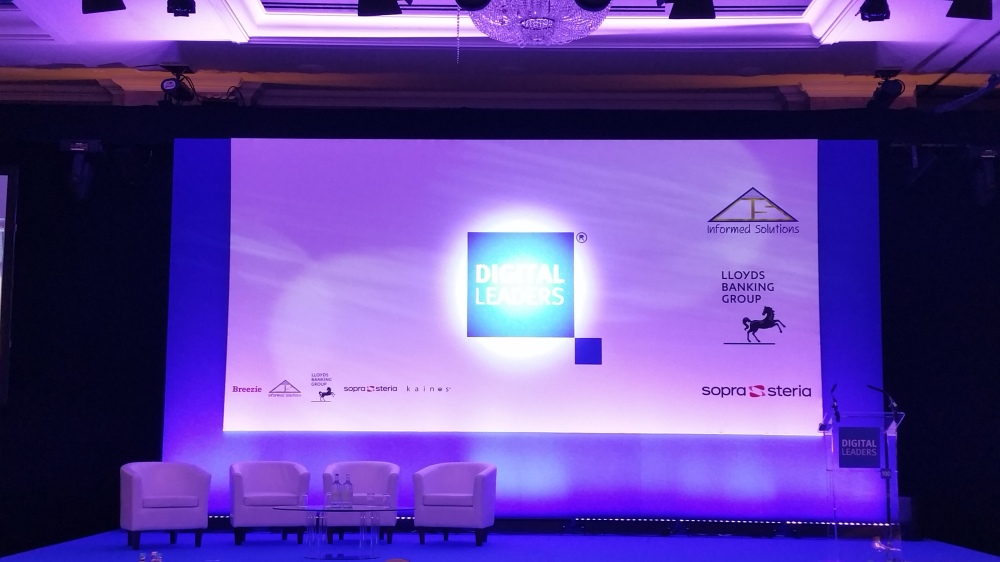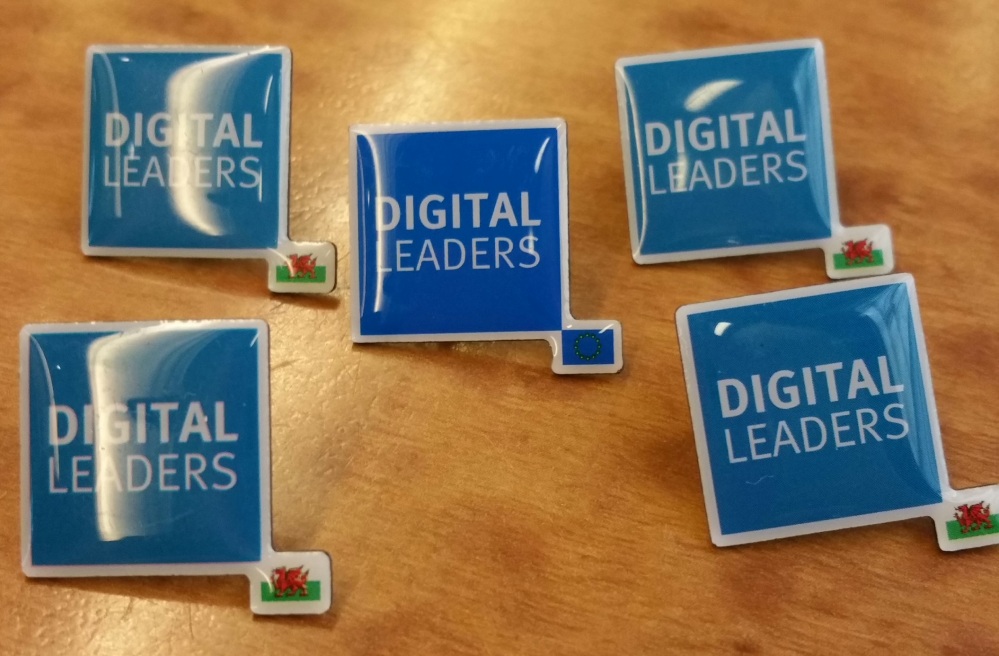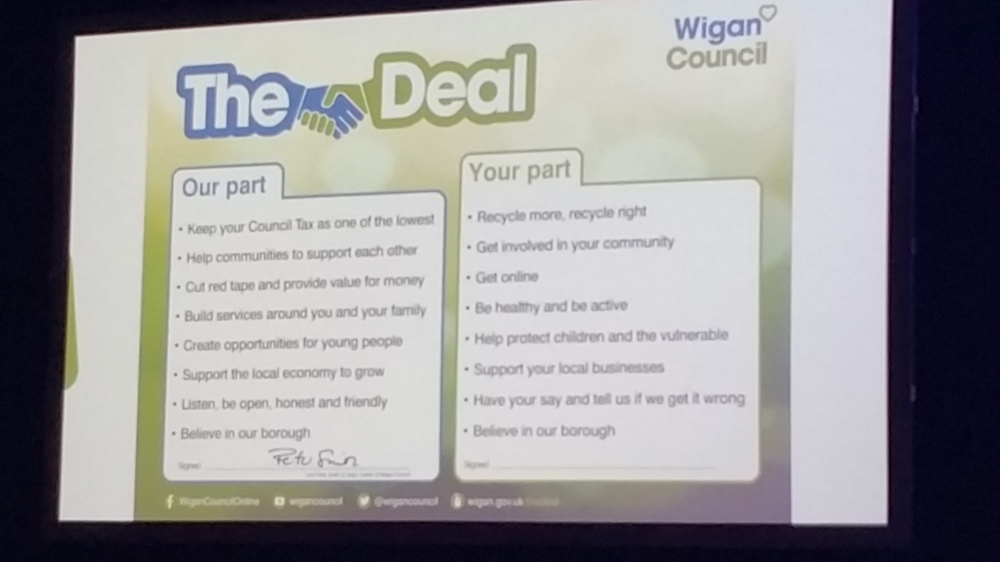WTF is digital anyway
Last week I went to the National Digital Conference in London which had a stellar line-up including a government minister, a Lord, an award-winning digital first council, the Executive Director of the GDS and a true celebrity in Maggie Philbin.
Whilst the speakers had a lot of valuable things to say, the comments by and conversations between delegates on Twitter was where the action was happening.
Rather than try to recreate what I learned by rewriting it all I’ll group the soundbites together under headings and try to make some sense of it all for you.

Organisational transformation
- Innovation and disruption are key for the digital future. Risk-averse organisations take note – you will be disrupted!
- You can’t redesign a service without redesigning the organisation that delivers it
- It’s easy to upgrade to the latest device. It’s hard to upgrade digital skills
- Digital transformation means business transformation, not just shoving forms on the website. We need to transform the way we deliver services and the way we work
- Electoral registration was given as an example of good use of real-time data. However if it’s about business transformation, when will Parliament be transformed? It still took an age to have the ‘emergency’ legislation passed to extend registration
- You can’t transform the whole organisation overnight. Start small – GDS was purposely a bolt on to the Civil Service with a clear remit to transform a handful of high volume transactions to prove it was the way forward
- The GDS was deliberately conceived as an insurgent start-up and it’s delivered 20 brilliant public services digitally
- If you want to attract the right employees to an organisation in the throes of a transformation programme you need to rethink your recruitment process. Change recruitment and the image of the organisation to align with the transformation programme
- Job adverts and job descriptions need to be disrupted to bring diversity. Engineer or coder could be called problem solver to attract right people
- The challenge isn’t getting troublemakers into your organisation. It’s making sure they still want to cause trouble after a year in the job. Create an environment to let them disrupt. Don’t make them conform
- Providing digital services is a journey without an end point
- Don’t write passwords on Post-it notes? Well, stop making me have 23 different passwords which need changing monthly then!
- Automate processes and humanise jobs
Data
- Data needs to be used with caution. What are the human stories behind the data
- Data can be manipulated and can be difficult to analyse, especially when there is a data analysis skills gap
Digital literacy
- There is a desperate shortage of digitally capable staff in the civil service and local government. This has been identified as a major barrier. There is also a lack of CPD for staff with digital skills
- Digital literacy should be part of the curriculum and there should be modern apprenticeships in digital (when I checked Skills Development Scotland there are no digital apprenticeships in our area, only social care. Imagine if those carers were digitally literate and could help those they care for to use digital to enhance their lives)
- The future is inspiring and the digital opportunities are endless – why then are IT classes in school so dull. Time to reframe?
- According to @maggiephilbin the teachers who supported her TeenTech programme did so in their own time and bought resources with their own money. They shouldn’t have to
- Qualifications have become a proxy for skills. It’s time to disrupt the education system and move to experience-based assessment of capability instead of rote learning and exams
- Chicken/egg. We have a digital skills gap but right now who’s going to teach our teachers so they can teach our kids?
- Let’s celebrate the creatively disruptive pupils in our schools. They may hold the key for our digital future
- Coding is just a language and should appeal to people used to being around languages (research has shown that the part of the brain used for learning a new language shows more activity in girls than boys. Girls are more likely to think abstractly about language than boys. All of this means that girls are more than capable of learning coding – it just needs framed in the right way to attract them to it – https://www.sciencedaily.com/releases/2008/03/080303120346.htm)
- I want to talk about STEAM not just STEM. The real magic happens at the intersection of STEM with the Arts
- You don’t need to know how to code to work in digital. There’s more to Digital than coding & IT, there’s design, ux, marketing. We need to break down stereotypes and get more girls engaged
- Social media is the easy way into digital for girls but most schools see social media as bad and a risk. This needs fixed
- IT and digital are different worlds. Digital needs removed from computing class and embedded in every subject, along with data analysis
WTF is digital anyway?
- IT costs are going up 60% every year. Digital does not mean IT. People are at the heart of digital – digital needs humanised
- So it should really be Customer First rather than Digital By Default?
- If the Executive Director of the GDS says digital isn’t about computers then it’s not. End of
- Disabled people use digital every day to live their lives. Use them and their experience when building digital services. If it works for them it will work for everyone

Leadership
- Feel the fear and do it anyway
- Creativity, bold thinking etc. should be considered ‘core skills’ not ‘soft skills’
- If you need to pitch digital to your CEO you may have the wrong CEO – he/she is a black cab driver when all his/her customers are using Uber
- Women need to apply for digital leader positions, and commit to applying until women fill more than half of digital roles
- GDS are leading by example on equality – staff won’t speak at events which don’t have a balance of diverse speakers
- You can’t impose culture on a team, all you can do is provide the right environment
- It’s OK to think out loud about organisational culture

Wigan Council – doing digital right
- The Wigan Council Deal – contract between citizens and the council
- 1 in 3 citizens in Wigan use an online account to transact with the council
- Wigan Council have co-designed with residents and partners and in doing so have connected communities

Growing old digitally
- Medicine can prolong life. Can digital make life worth living?
- Watches have changed from time pieces to heart monitor, fitness monitor and more
- For wearables at work look no further than @Rarelyimpossibl Theirs are even linked to personalised soothing @Spotify playlists
- We no longer have a 3-stage life (education, work & retirement). Lifelong learning and digital resilience is needed to enhance the lives of those living to 100
What about the tech
- Tech and tools aren’t about bells and whistles, they are about enabling you to do your day job effectively
- We downgrade on the tech we use when we walk through the office door
The irony wasn’t lost on those delegates, including me, for whom the event wifi wouldn’t work!
I also think that it’s about time the annual National Digital Conference left London and went on tour – I have suggested Glasgow next year.
But I’m not holding my breath.


 Manage the task, not the channel. Don’t manage the intranet or the content – manage the thing people are trying to do and if it means getting involved in changing the process in the back office, roll up your sleeves and get stuck in.
Manage the task, not the channel. Don’t manage the intranet or the content – manage the thing people are trying to do and if it means getting involved in changing the process in the back office, roll up your sleeves and get stuck in.





